Sponsored Content: Definitive Guide with 5 Great Examples
You’ve probably encountered publishers and influencers doing paid collaborations with other brands and creating sponsored content for them.
But how does it work exactly? What is sponsored content? What forms can it take? And can you sponsor any content you have?
We have all the answers here in our guide.
Let’s dive in.
What is Sponsored Content?
Sponsored content is a type of native advertising that a publisher creates and distributes upon the request of a sponsor who also pays for it.
So, we can say that sponsored content is a variety of native ads that fits organically into the page.
What differentiates sponsored content from content marketing and product placement?
Content marketing is a general strategy for building a brand’s online presence. Product placement (or embedded marketing) focuses on inserting brand references in outside content (not related to the brand’s industry), such as film and television, with promotional intent. In its turn, sponsored pieces advertise a product or service for the sake of brand awareness through content that shares this brand’s values.
Alright, the definition is more or less clear, but you still might be wondering – how can you tell if you’re looking at sponsored content or not?
We have the answer in the following section.
How Do You Identify Sponsored Content?
Here, we’d advise you to look for obvious and non-obvious clues.
First of all, when the content is sponsored, it should include some kind of disclosure. For instance, YouTube influencers doing promotions for brands add a Paid Promotion message in the top left corner of the video, like here:
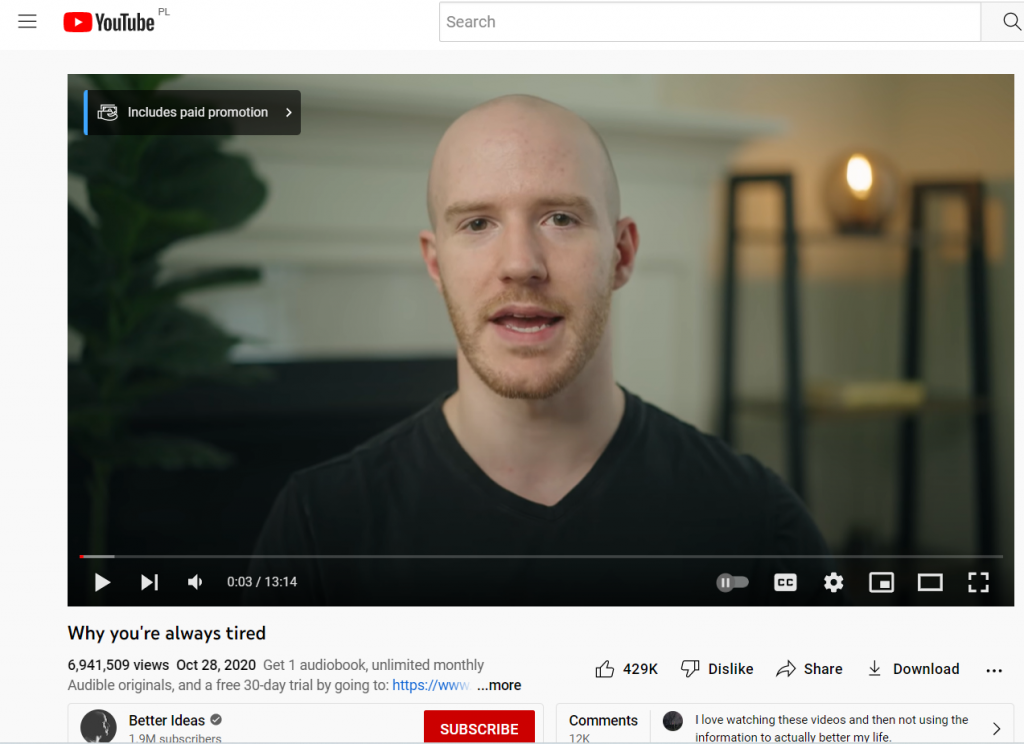
This video comes from the YouTube channel Better Ideas, which often does sponsored partnerships with different brands and has to disclose these collaborations according to YouTube’s Ad Policies and Community Guidelines. It’s also required by the FTC. The same rules apply to Instagram, Facebook, and other social media platforms.
What about written content?
Publishers like BuzzFeed, Huffington Post, The NY Times, The Wall Street Journal, and others that frequently upload sponsored content always add the name of a brand that paid for content promotion and sometimes include a small paragraph indicating the paid partnership, like in the example below:
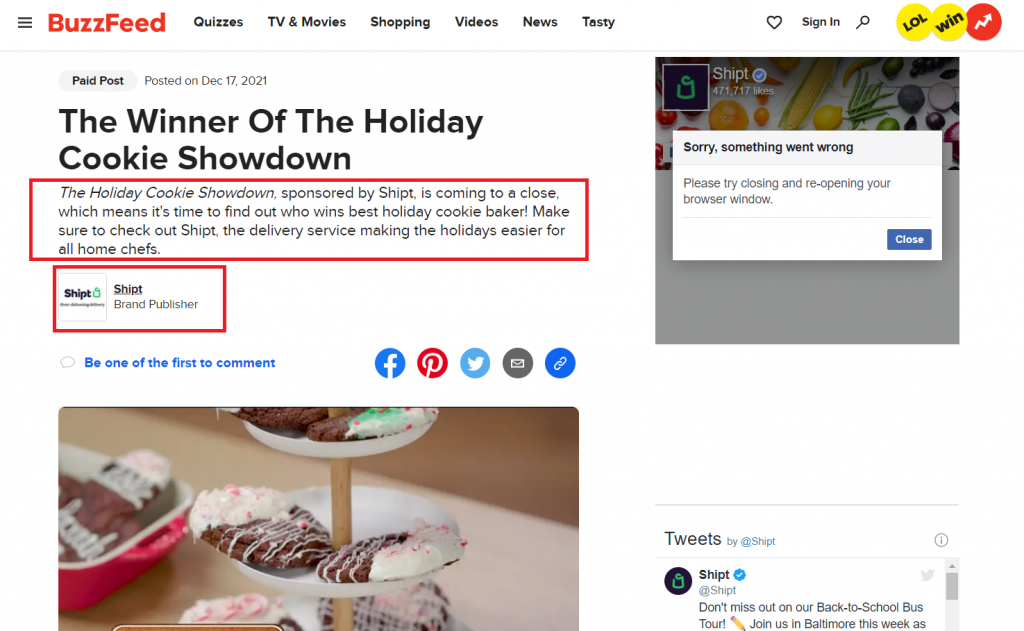
Other, less obvious clues are the article’s byline or video description – they often include the language suggesting that content includes a paid promotion. For instance, in one of the videos by Better Ideas, the creator didn’t flag their content as sponsored but added the message indicating it in the description:

Finally, pay attention to the content’s headline – the language used in it can give a hint that the content is sponsored.
So, sponsored content seems popular among brands, publishers, and influencers. But how effective is it? Wouldn’t it be enough just to run online ads?
Let’s look at some data to answer these questions.
Is Sponsored Content Effective?
When discussing the definition, we mentioned that companies often invest in sponsored content for brand awareness. Nielsen studied the effectiveness of this strategy and confirmed it – businesses that sponsor content from a trusted publisher see a 50% brand lift compared to companies that make their own content.
Another fact that proves the effectiveness of sponsored content is that it opens the door to new audiences. 80% of marketers have confirmed that paying influencers for branded content is a highly effective growth strategy.
One more important factor that speaks in favor of sponsored content is that people don’t particularly like invasive traditional advertising. In fact, according to Verizon’s study, 79% of respondents agreed they’d prefer seeing ads blending with other content on a page, which is precisely what branded content is about.
But hold on – you can say the same about native ads. So, how can you differentiate them from sponsored content?
Let’s see.
Sponsored Content vs. Native Advertising
The difference between sponsored content and native advertising is that the former is about a partnership between two brands, while the latter has a broader scope.
Native advertising is defined as a type of paid advertising where the ad matches the nature, form, function, and feel of the content attributed to the source where it’s published.
Just to give you an example, think of the last time you searched for something on Google. You entered the keyword and saw the list of pages with the information on your query. Some of the pages probably had the word Ad near them, but overall looked like other entries on the list – these were native ads.
Native advertising comes in six forms:
- In-feed ads – promotions that appear in your feed (in other words, brand sponsored content)
- Paid search ads – appear at the top of Google search (like in our example above)
- Content recommendation widgets – a link to an ad appears in a website widget (typically at the bottom of the page).
- Promoted listings – ads with sponsored products that appear at the top of all product recommendations on e-commerce websites like Amazon and eBay.
- In-ads with native elements – promotions that hold contextual relevance to the publisher.
- Custom ads – promotions based on a customer’s recent search activity (if you search for neuroscience podcasts on Spotify and the platform later promotes relevant content for you).
So, to sum up, sponsored content is a form of native advertising and is about a collaboration between two brands, a sponsor who orders branded content and a publisher who optimizes it to make it fit their platform and does the distribution.
In its turn, sponsored content also comes in different forms. Let’s take a look at them.
6 Common Types of Sponsored Content
The great part about this strategy is that you can choose among a wide variety of content formats as long as it fits your style and brand values.
Typically, companies pick one of the following six sponsored content types. Let’s see what they are all about.
Type #1: Article
A sponsored article is a type of content marketing used by advertisers to promote a brand. Such articles fit in with other content on the publisher’s website but include some features indicating a paid promotion (backlinks in content, brand’s name in the byline, etc.).
We’ve already shown you an example of a sponsored article from BuzzFeed, and here’s another one from HuffPost:

This piece of content promotes the biography written by Ken Burns about the Roosevelt family – you can see it from the title and the excerpt highlighted in italics with the link to the book.
The article in the example is a list of facts from the book, and you can also sponsor a similar listicle or request a guide, valuable content with tips, or even a case study to feature your brand.
Type #2: Podcast
Podcasts often include promotions from brands that sponsor a particular episode. The host usually announces these sponsorships at the beginning of the episode but can also pitch them at the end, depending on the brand agreement provisions.
Apart from that, podcast hosts should also include all the episode sponsors in the description to it. You can see Dr. Andrew Huberman, the creator of Huberman Lab, do it for every podcast episode on Spotify:

Sponsored content in podcasts resembles a commercial break, and hosts often pick a brand with a product relevant to the topic of a particular episode for collaboration.
Type #3: Video
Doing video promotions is one of the most common influencer marketing examples on YouTube. An influencer can dedicate an entire video to your product or only a part of it. Either way, there should be a message showing that content includes a paid promotion, either attached to the video or inserted in the video description. Besides, the influencer must announce that the content was fully or partially sponsored.
We already gave you an example of a partially sponsored video (from Better Ideas), and here’s a fully sponsored video from Marques Brownlee:

In it, Marques reviews the MacBook Air laptop (we also listed it among the best computers for digital marketers) provided by Apple specifically for this purpose. However, given the nature of Marques’s channel, the review is honest and objective, which is why it doesn’t appear sponsored.
Type #4: Infographic
An infographic is a type of visual content communicating information to its target audience using a blend of graphics and copy. In terms of sponsored content, a publisher or an influencer would either create a branded infographic from scratch or republish the ready-made one along with a short description.
Reposts, of course, happen more often. Here’s an example of a reposted sponsored infographic from PopChart Lab on BuzzFeed’s website. The sponsored post includes the graph and a short description promoting PopChart Lab’s services:

As you can see, the description also includes a link to the PopCharts Lab website indicating that it’s a promotional post. The goal of this content is to increase brand awareness by showcasing the company’s product.
Type #5: Thought leadership
Thought leadership content is a strategy that brands use to build up their authority in a given industry or niche. Ideally, when producing such content, a brand should focus on topics it has significant expertise in and introduce a solution to a real-world problem that no one has presented before.
It’s also worth mentioning that the narration in thought leadership content should be done through storytelling. You can see Richard Branson, the founder of The Virgin Group, doing it often in his Ask Richard posts on LinkedIn. Here’s an example of his thought leadership post mentioning Literati, a virtual book club website:

Storytelling makes this seem like a recommendation more than a promotion, and the link to Literati appears organically embedded in the content. Thus, a sponsored post in the thought leadership style is a great way to promote your brand in a subtle and non-intrusive way often characteristic of traditional ads.
Note: it’s important to make sure that the thought leader is also a well-known professional in your field. For instance, if your SaaS business wants to promote its keyword research tool, you can partner with an SEO consultant. This way, you get more chances to reach the right audience who will 100% be interested in your product.
Type #6: Social media content
Influencer marketing, in particular, partnering with social media influencers on sponsored posts, is a great way to get some extra online exposure. Here, the idea is the same as with YouTube video content – an influencer creates a post native to the platform where they’re active, and it should include a Paid partnership or an Ad message.
Here’s an example of a sponsored social media post by Valeria Lipovetsky done in collaboration with Flow, a manufacturer of alkaline spring water:
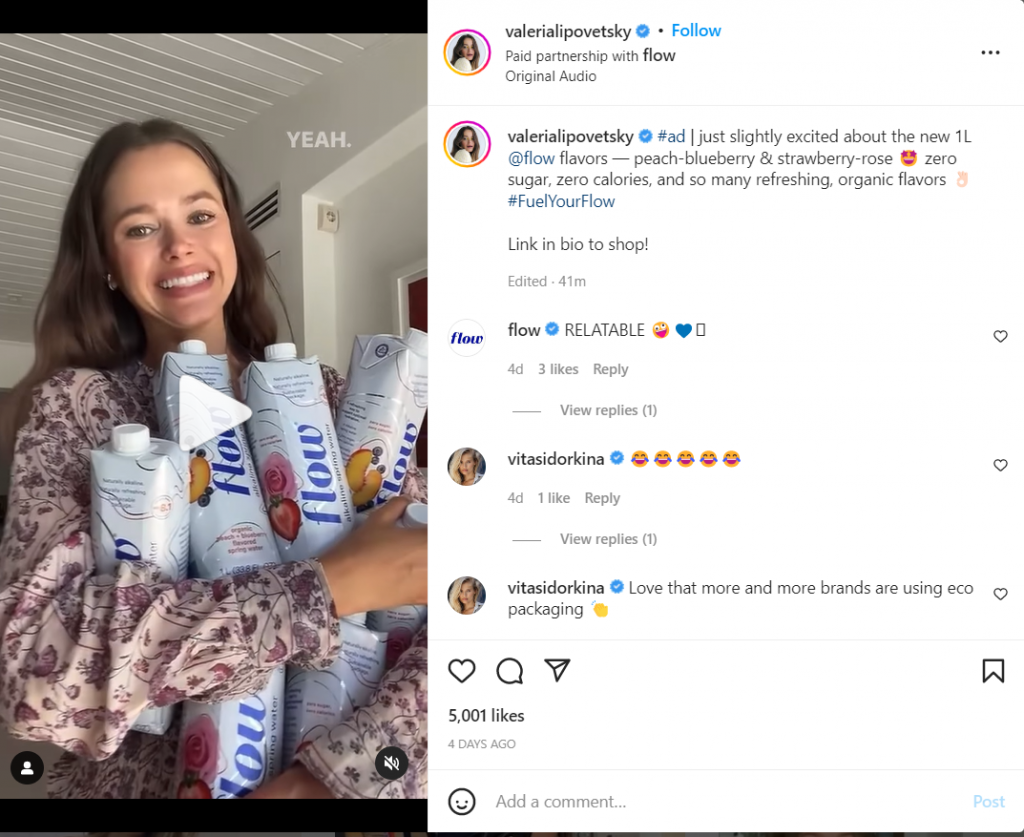
The post appears on Instagram Feed as regular content, but you can see the #ad hashtag and the brand’s name indicating that it’s a sponsorship. Doing such partnerships with content creators gives you access to new audiences and increases brand awareness.
Looks like sponsored content has only advantages, but is it really so?
Let us look at both pros and cons of this strategy to help you form an objective opinion.
Sponsored Content Pros and Cons
Sponsoring a publisher to produce branded content is definitely a tactic you should try. As we mentioned, its main goal is to make your brand more recognizable, so if you’re just entering your industry and have unique content to share, why not make it sponsored?
Of course, there’s more to sponsored content than meets the eye. So, let’s explore both the perks and downsides of having this strategy in your content marketing workflow.
Sponsored content advantages
We’ve mentioned main sponsored content pros here and there, but let’s sum them up:
- Increases brand awareness: the Nielsen report mentioned earlier highlights that sponsored content delivers an 86% higher brand recall. In IPG Media’s study, this percentage is lower – 59%, but still quite impressive.
- People trust it: 79% of consumers say they trust content posted by the premium publisher more than Twitter and Facebook. Potentially, higher trust can bring you more conversions.
- Can boost sales: sponsored content produced by an influencer delivers an 11 times greater ROI than banner or display ads.
- Increases engagement: since sponsored content is often unique, offers high-value insights, and gets published on websites with diverse audiences, it’s almost guaranteed to deliver high engagement.
Why “almost guaranteed”?
Unfortunately, this content type is not foolproof and has some downsides. Let’s look at them.
Sponsored content disadvantages
The good news is that sponsored content has more pros but cons, including the following ones, can ruin your first experience with this strategy:
- Hard to measure: if you don’t set up very specific KPIs and track metrics focused on a given goal (drive traffic, increase awareness, boost conversions, etc.), sponsored content can be almost impossible to measure.
- Can cost a lot of time and money: having your content reposted on a premium publisher’s newsfeed is one thing, but completely outsourcing content creation and promotion can hit your wallet pretty hard.
- Can be deceiving if not done right: if sponsored content doesn’t follow the rules and regulations, it misleads the readers, whose complaints can really hurt your reputation.
Surely, all these disadvantages only happen when you do not follow the best practices. Let’s look at them in the following section.
5 Sponsored Content Best Practices
Based on the advantages and disadvantages shared above, we’ve put together a list of five practices to follow if you want to achieve the best results possible with your branded content strategy.
Let’s explore them in more detail.
1. Focus on providing value to the readers
When investing in sponsored content, it might be tempting to talk about your business alone and not share anything helpful. After all, you’re paying money for it.
However, taking this approach can endanger the entire strategy. Treat branded content how you would treat the content you publish on your owned media. While it will undoubtedly have some promotional elements (it’s still a form of advertising), this content should still share something unique that will wow the readers and leave a lasting positive impression of your brand.
2. Choose the right platform or medium
Not every resource would be a good fit for your content. If you’re manufacturing microchips or own a SaaS service, platforms like BuzzFeed or HuffPost might not be able to cater to your expectations.
Thus, consider the media that would fit your value proposition better. You can rely on word-of-mouth or do a brief competitor analysis to see where your rivals have posted their content. For the B2B companies, thought leadership content can be an excellent option, while businesses that offer a broader spectrum of products or services can try publishers like BuzzFeed.
3. Don’t rely only on text
Would you like more people to remember your brand? Then make sure to dilute the text in your sponsored content with some engaging visuals.
According to HubSpot, when people listen to the information, they will remember only 10% of it three days later. However, if this information is paired with relevant images, people can retain up to 60% of it after three days. Thus, images equal more engagement, which is exactly what you want to reach with your branded content.
4. Be clear about your goal
The most common use for sponsored content is to raise brand awareness, which can sound too general. How exactly do you want to build awareness? Which means would work best? Which audience should you target first?
Having clearly defined goals and objectives will help you make sure your money doesn’t go down the drain. You should have a clear vision of how a publisher or an influencer should promote your brand. This way, you will also know what to expect from your sponsored collaborations.
5. Follow the FTC guidelines
FTC (Federal Trade Commission) has a set of rules brands should follow when it comes to online marketing and advertising. Breaking these rules can potentially lead to legal trouble and harm your reputation.
By the way, not disclosing that the content is sponsored can get the publisher or blogger in trouble with their audience, too. In fact, 20% of consumers said they would stop following an influencer if they failed to be upfront about a paid ad or sponsorship. So, it’s a must to discuss potential legal issues with the publisher, too.
We’re done with our best practices, and now, to seal the deal, let’s look at successful examples of using sponsored content.
5 Examples of Sponsored Content
So far, we’ve already shared quite a few examples of sponsored content, but now let us present you with some brand-to-brand collaborations that can inspire your next branded content campaign.
Example #1: Vanguard and Shopify
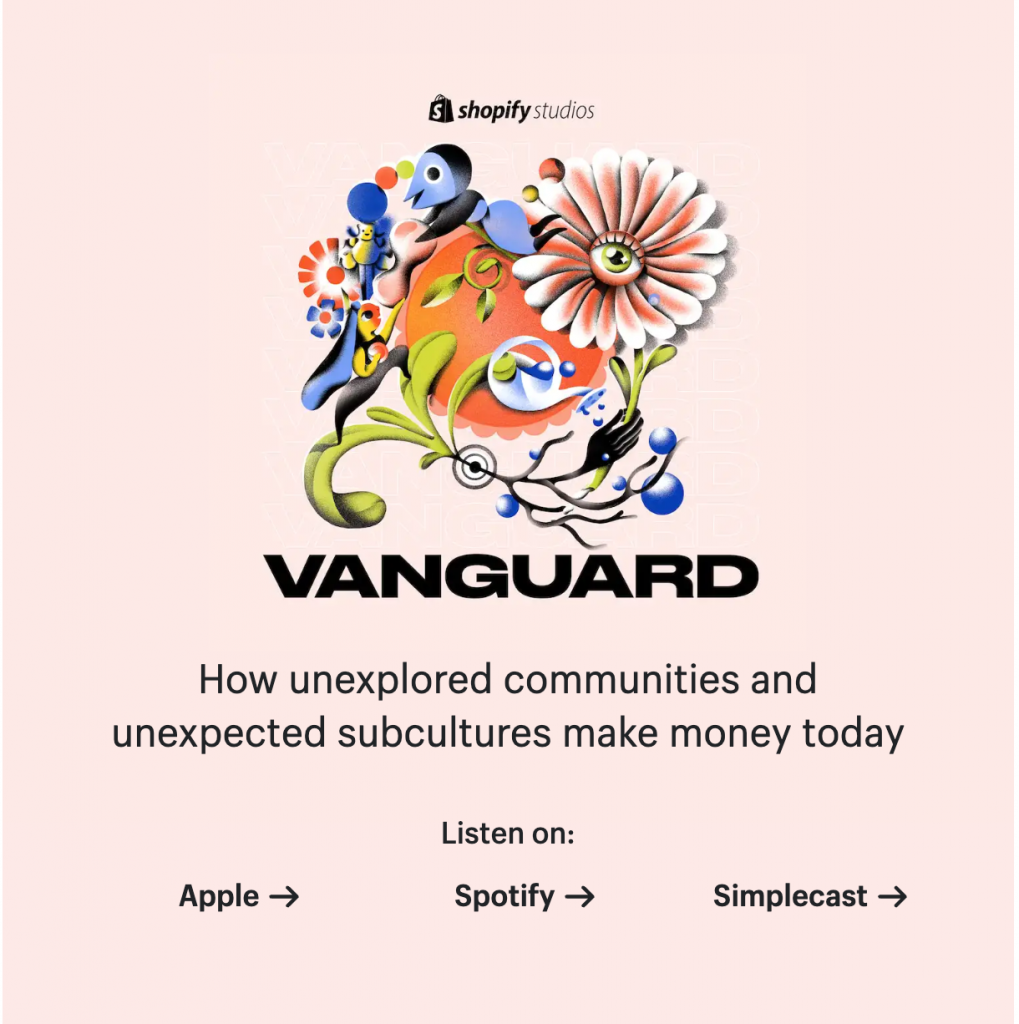
We’ve talked about podcast sponsorships before, but it was mostly about several brands paying for promotions done during a podcast episode. However, it’s also possible for a brand to support the entire podcast, like in our example here.
Vanguard is a podcast powered by Shopify, talking about how small businesses, communities, and subcultures make money. Every episode features a business owner and their journey to success. By sponsoring this podcast, Shopify also promotes its services to e-commerce businesses, encouraging them to use its platform for growth.
Example #2: Sleep Numbers and HuffPost

As we repeatedly mentioned throughout the article, you should sponsor only quality content that delivers high value to the target audience. Thus, if you have some relevant stats or research to share that you think people will find interesting, present them in your branded content.
Here, make sure that the topic resonates with the target reader. For instance, Sleep Numbers made an advertorial covering the statistics on insomnia since almost one-third of the US population suffers from sleep deprivation. You can also put your numbers into an infographic and thus boost your content’s shareability.
Example #3: Hot Wheels and Buzzfeed
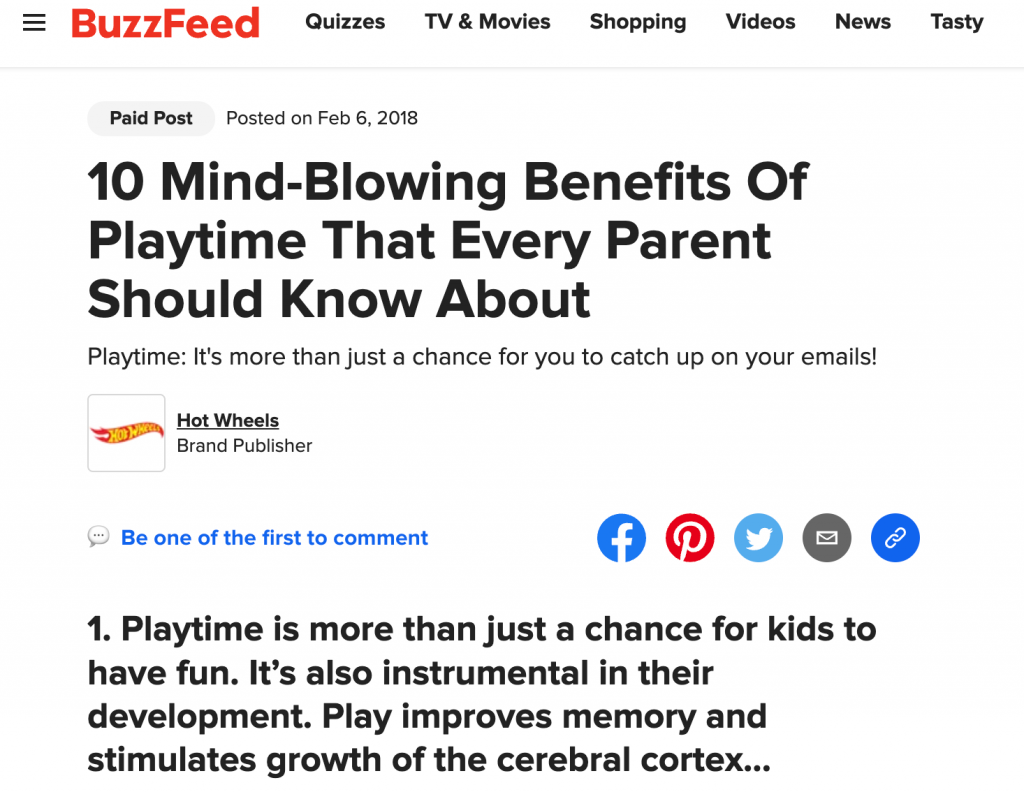
With sponsored content, the rule of thumb is to keep it relevant to the reader but also not forget to embed your product or service, which you want to do in the most organic way possible.
Hot Wheels, for example, featured their iconic cars in an article on the benefits of playtime with kids. All of the points in this sponsored content are backed by science, making it more of a high-quality informative editorial content piece than an in-your-face product promotion.
Example #4: Someecards and YouTube
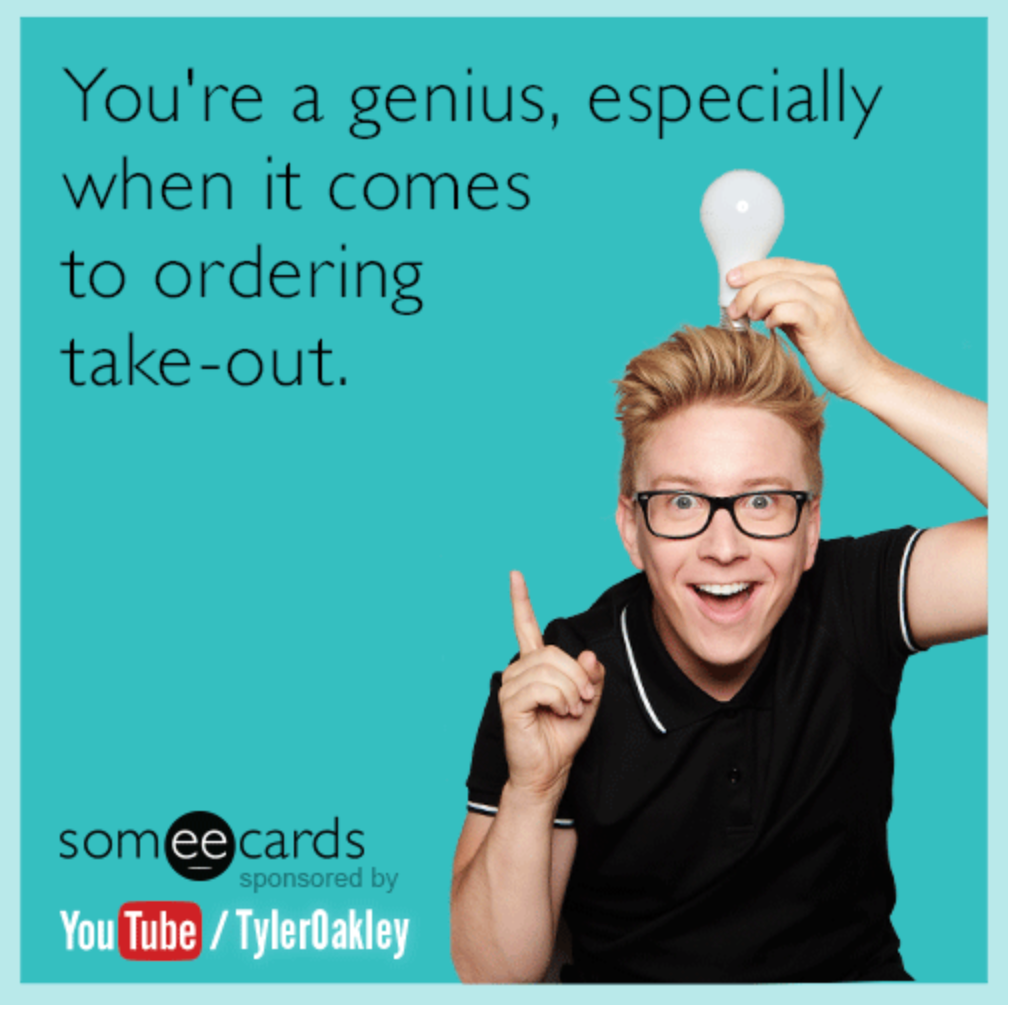
In general, you would want to choose a brand from your industry or niche for a sponsorship collaboration. However, going beyond that in some cases can bring you even more exposure.
This is true about the partnership between YouTube and Someecards, a free online e-cards service. YouTube sponsored this brand to promote some of its influencers, like Tyler Oakley and Lily Singh, through a set of satirical e-cards which people shared on social media. This creative idea gave the channels of these influencers an additional boost.
Example #5: Selena Gomez and Coach
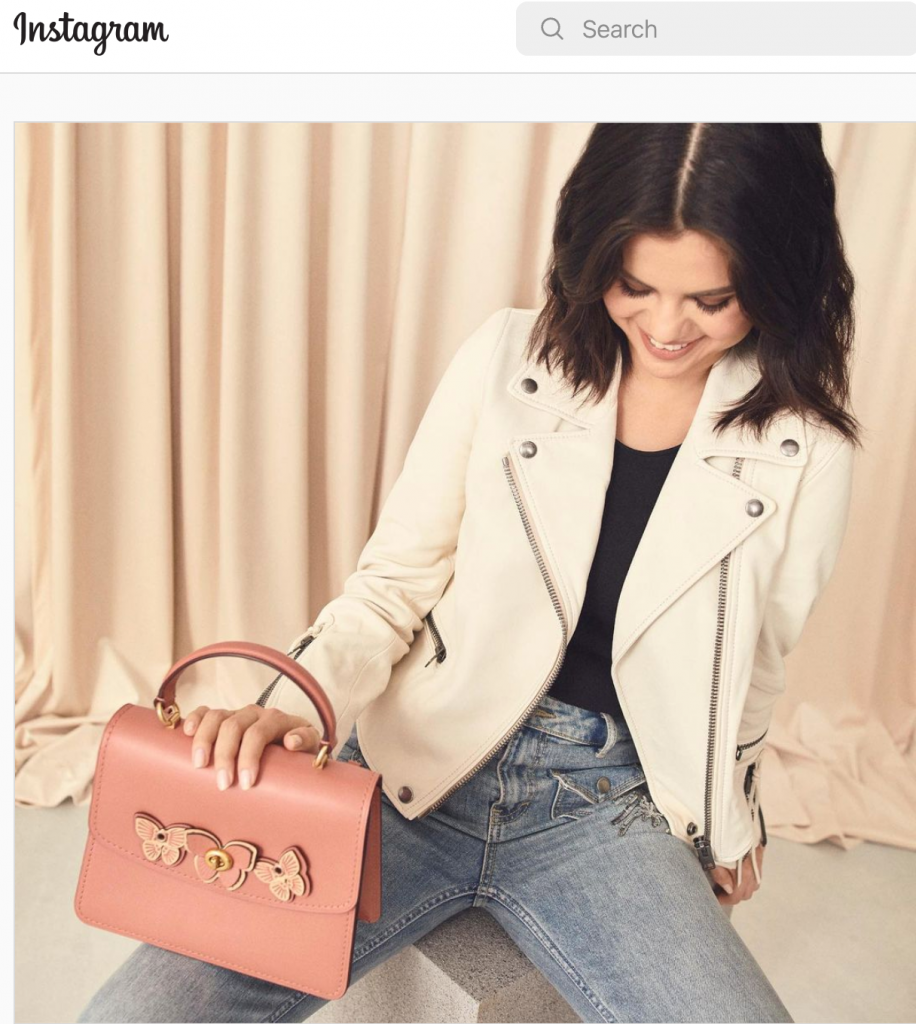
Our final example comes from the field of influencer marketing. It’s a social media post made by Selena Gomez and sponsored by Coach. Apart from featuring the brand’s attire in the image, she also talks about each clothing piece she’s wearing.
This content aligns with Selena’s other Instagram posts very well since she regularly shares similar pieces (not sponsored) talking about beauty and fashion. Thus, to her followers, this post appears as something common for her Instagram activity, making it a good example of non-intrusive native advertising.
Now Over to You
So, is sponsored content worthy of your attention?
We’ll leave the final decision up to you, but based on what we’ve discussed today, it can be a great addition to your content marketing strategy. Let’s sum up its advantages:
- Increased brand awareness
- Improved brand positioning
- More trust
- Higher engagement
- Better sales
Of course, you will only land these perks if you approach this tactic correctly, so make sure to follow our guide to the tee to make it work for you.
Would you like to learn more about topics similar to this? Make sure to check out our blog – we have written extensive guides on influencer marketing, content marketing, and other digital marketing strategies.

Mariia is a content strategist and editor at Digital Marketer’s World. She is passionate about educating others on all things marketing and believes in the power of the written word.
